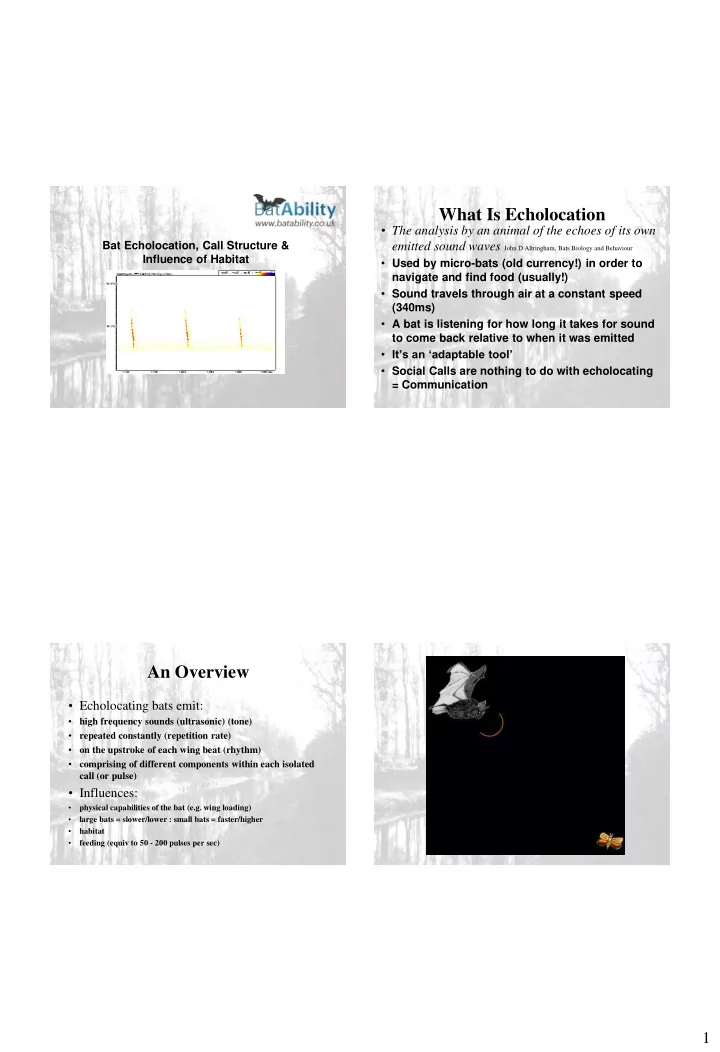

What Is Echolocation • The analysis by an animal of the echoes of its own Bat Echolocation, Call Structure & emitted sound waves John D Altringham, Bats Biology and Behaviour Influence of Habitat • Used by micro-bats (old currency!) in order to navigate and find food (usually!) • Sound travels through air at a constant speed (340ms) • A bat is listening for how long it takes for sound to come back relative to when it was emitted • It’s an ‘adaptable tool’ • Social Calls are nothing to do with echolocating = Communication An Overview • Echolocating bats emit: • high frequency sounds (ultrasonic) (tone) • repeated constantly (repetition rate) • on the upstroke of each wing beat (rhythm) • comprising of different components within each isolated call (or pulse) • Influences: • physical capabilities of the bat (e.g. wing loading) • large bats = slower/lower : small bats = faster/higher • habitat • feeding (equiv to 50 - 200 pulses per sec) 1
Fast Wingbeat Slow Call Structure Slow Flight Speed Fast Detail Information Distance • Can comprise of a FM component and a CF component Myotis spp. Pipistrellus spp. Nyctalus spp. Plecotus spp. • Broadband = FM bats/components • Short sweep down through frequencies (iow the frequency alters Freq during the call) • Good for detail at close range & accuracy • Narrowband = CF bats (almost!)/components • Longer call covering narrower frequency range (iow the frequency remains constant and the pulse lasts longer) • More effort concentrated in one area over longer time • Good for distance • Horseshoe bats & Doppler shift (i.e. the pitch of a sound rises or drops as a sound source moves) Closed Edge Open Time Habitat Influences Measuring Call Parameters • Open Space • Use lower rep rates • Use long range echo’, loud, lower frequency & regular • Have a longer CF component • Change direction less often • Flies faster = less wing beats (e.g. Nyctalus ) • Clutter • Use faster rep rate • Shorter & quieter calls • Use FM • Flies slower = more wing beats (e.g. Natterer’s) • Edge Habitat? 2
Harmonics Attenuation Search Phase Calls Habitat Influence on Bat Call ID Better for ID Leisler’s As the bat moves to an Open setting the Nyctalus call structure becomes more distinguishable Noctule Closed Edge Open 3
Pipistrellus spp. Bat Echolocation – Species ID Nyctalus spp. Myotis spp. • All fast rep rates • All FM bats (no CF tail) = dry clicks • Very difficult to ID to species level, however… • Sometimes you can get there - almost! 4
Brown long-eared Others • Late emergers • Horseshoe spp • Very quiet echolocator • Barbastelle • Sometimes go acoustically ‘dark’ • Serotine • You need to be close to the bat • Harmonics 5
Recommend
More recommend